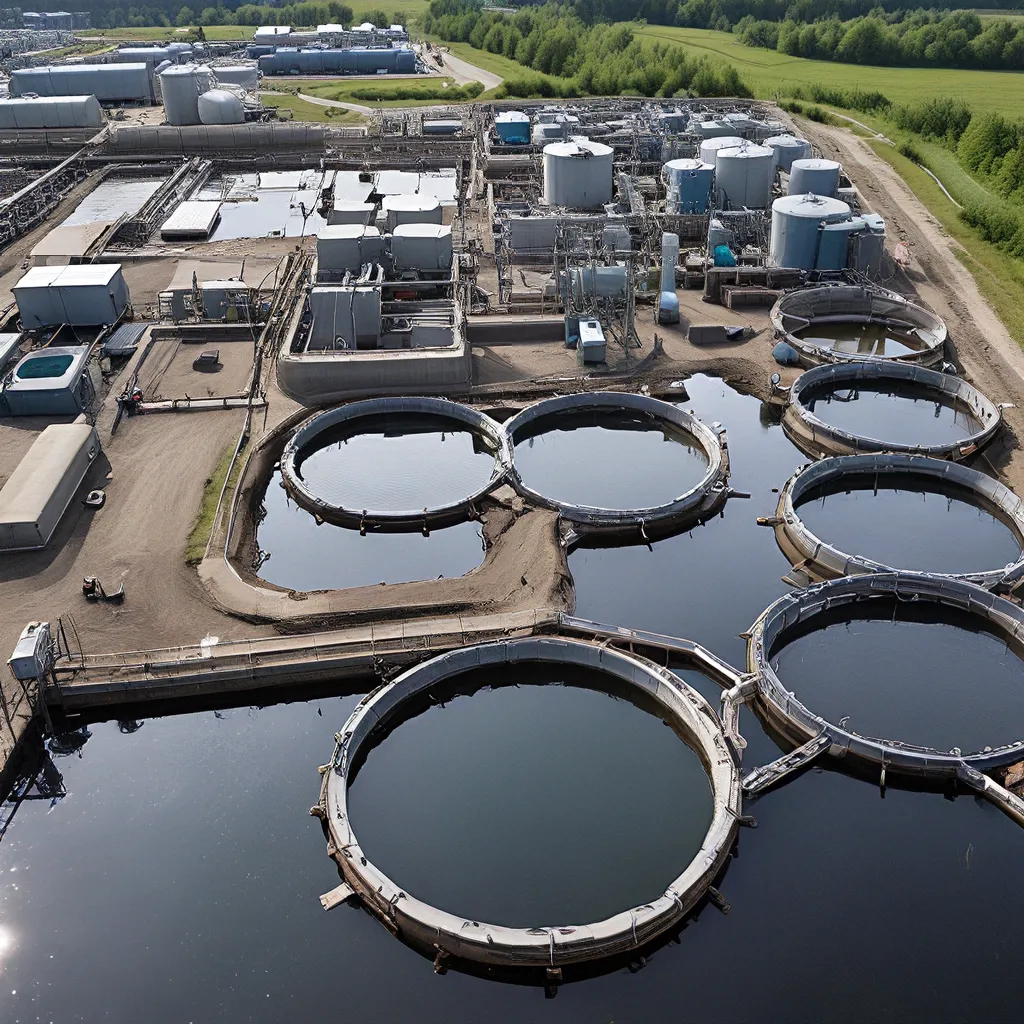
The Symbiotic Relationship between Water and Energy
As a society, we often take for granted the vital role that wastewater treatment plays in our daily lives. Behind the scenes, this unsung hero works tirelessly to protect our environment and public health, ensuring that the water we use is safely returned to the natural cycle. But what if I told you that wastewater treatment can do more than just clean our water? What if it could also be a renewable energy powerhouse, fueling a more sustainable future?
It’s a fascinating concept, and one that I’ve been deeply fascinated by for quite some time. You see, the integration of wastewater treatment and renewable energy is not just a pipe dream – it’s a reality that’s rapidly gaining momentum. And as someone who’s passionate about the environment and the power of innovative solutions, I can’t help but be excited about the implications.
Harnessing the Power of Wastewater
To understand the potential of this integration, let’s first take a closer look at the wastewater treatment process. At its core, wastewater treatment is all about removing contaminants from the water we’ve used, whether it’s from our homes, businesses, or industries. This process involves a series of physical, chemical, and biological treatments, each designed to tackle a specific type of pollutant.
But what if I told you that this process also generates a valuable byproduct? That’s right – the organic matter and nutrients that are removed from the wastewater can be converted into biogas, a renewable fuel that can be used to generate electricity and heat. This biogas is produced through a process called anaerobic digestion, where microorganisms break down the organic matter in the absence of oxygen.
Recent research has shown that the energy potential of wastewater is significant, with some estimates suggesting that wastewater treatment plants could potentially generate up to 12% of the world’s electricity needs. Just imagine the impact that could have on our transition to a more sustainable future!
Synergies and Opportunities
But the benefits of integrating wastewater treatment and renewable energy don’t stop there. NREL researchers have been exploring the synergies between these two systems, and the results are quite remarkable. By leveraging the complementary nature of water and energy infrastructure, we can unlock mutual benefits and improved reliability for both systems.
For example, hydropower – a renewable energy source that harnesses the power of flowing water – can be used to power wastewater treatment plants, reducing their reliance on traditional energy sources. Conversely, the biogas produced by wastewater treatment can be used to generate electricity and heat, which can then be used to power the treatment plant itself, creating a self-sustaining loop.
But the potential goes even further. Emerging research suggests that we can integrate other renewable energy sources, such as solar and wind, into the wastewater treatment process. By using these renewable sources to power the various stages of treatment, we can further reduce the environmental impact and enhance the overall sustainability of the system.
A Future of Resilience and Reliability
As we grapple with the challenges of climate change and the need for more sustainable energy solutions, the integration of wastewater treatment and renewable energy is poised to play a crucial role. By harnessing the power of our water infrastructure to generate renewable energy, we can reduce our carbon footprint, increase energy independence, and build a more resilient and reliable energy system.
Imagine a world where wastewater treatment plants are not just clean water factories, but also energy hubs – producing their own electricity, heating their own facilities, and even selling excess power back to the grid. It’s a future that is not only possible, but one that is actively being explored and implemented in communities around the world.
And as someone who’s deeply passionate about the environment and the power of innovative solutions, I can’t help but be excited about the potential of this symbiotic relationship. It’s a testament to the incredible potential of interdisciplinary collaboration and the power of embracing the interconnectedness of our systems.
So, what are we waiting for? Let’s dive in, roll up our sleeves, and work together to harness the power of wastewater and build a more sustainable future for us all. The time to act is now, and the possibilities are endless.